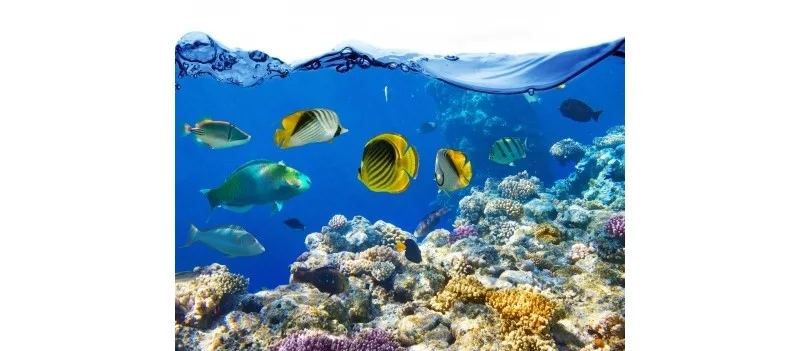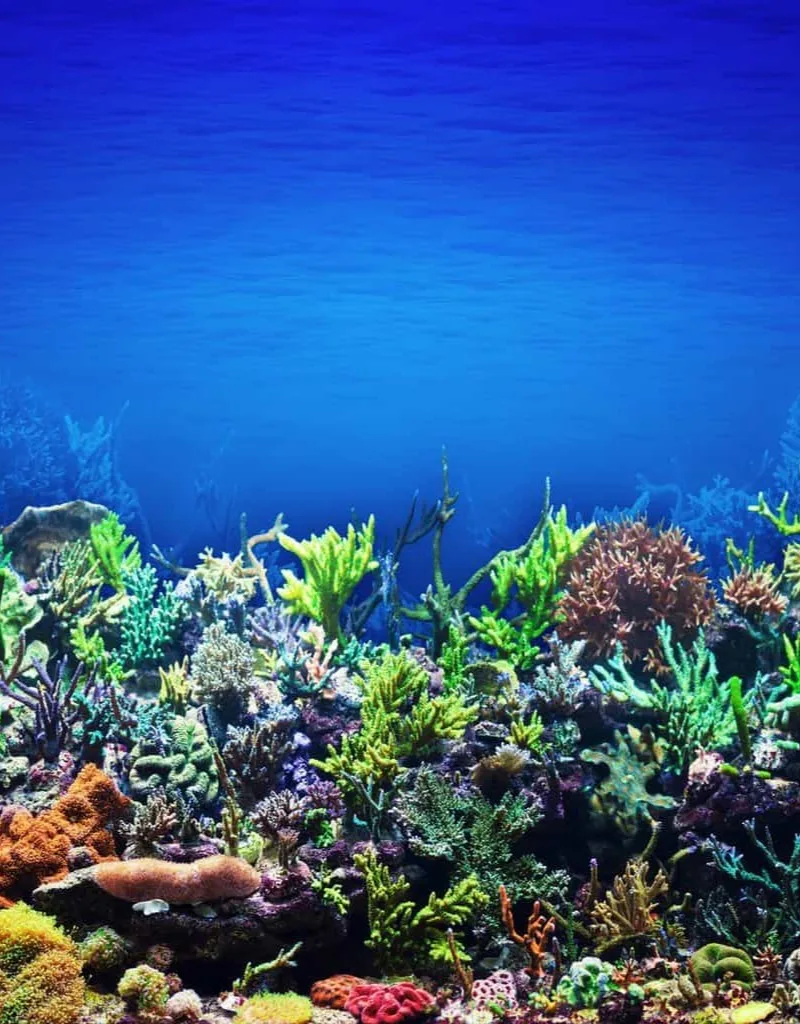Keep in mind that the optimal tank condition is vital for your fish’s health, and you should continuously strive to meet that requirement. I mean, you should pay close attention to water’s hardness level, and this factor is determined by the water’s content of calcium and magnesium. Moreover, there are fishes species that will exhibit more vitality while living in very soft water containing fewer minerals.

Understanding Water Hardness -Aquarium Water
A W hard water can be expressed in two different numbers.
Geral Hardness GH: These colors show the presence of calcium and magnesium.
Carbonate Hardness KH: Symoblizes the buffering ability of water which controls pH changes.
Hard water itself is not bad but some types of fish, especially those from soft waters, Amazon or Southeast Asia will have a problem adjusting to hard water. You might observe the fish exhibiting signs of stress, limited growth rate, or failure to reproduce.
Methods for Softening Aquarium Water – Aquarium Water
There are several methods to achieve “soft” water in the tank, each with its own advantages and disadvantages.
Reverse Osmosis systems
A semi-permeable membrane is used with a very small mesh to take out the minerals that have gone into the solution allowing only very pure “soft” water to pass through. This system requires water pressure to work; generally, your household water pressure is high enough to do the job.
Advantages : it works very well and will remove unused chlorine and chloramines.
One thing to keep in mind is how much the RO-cleaning system costs; it can be relatively expensive. RO water is non-buffered, i.e. has no KH. You can achieve the necessary total and KH hardness values by adding mineral additives while adding tap water.
Also, pH needs to be monitored; RO-water is slightly acidic on its own.
Water Softener Pillows/Resins– Aquarium Water
Ion-exchange resins may be in the system. These resins attract and hold calcium and magnesium ions, which softens the water as it flows through.
Pros: It’s easy to get to because it’s in pet shops.
Things to think about: This means that the pillows and resins need to be changed every so often. It could lower the pH by a lot, which would make GH and KH drop. Always check the conditions of the water and fix the KH if needed.
Moss made of peat:
Function: When it soaks, the tannins come out and lower the pH and smooth the water naturally.
Benefits: It’s a natural way to get water that meets the needs of blackwater species, and it can be found quickly.
Things to think about: It might turn the water a little brown. It may only take a short time for the material to soften, but it needs to be closely watched to make sure it doesn’t become too acidic. Hard water that is very hard might not work with this method.
As for Indian Almond Leaves (IALs),
Function: Like peat moss, IALs release tannins that balance the pH and make the water less hard.
Benefits: These kinds of drinks have tannins and antibacterial qualities that make them healthy.
Things to think about: The rate of breakdown changes, so you’ll need to keep an eye on it to keep it from getting softer. It might be a little yellow.
A Driftwood:
The tannins in water keep washing away over time, making the water softer and slightly acidic.
Benefits: The natural look of the decorations goes well with the aquarium’s worldly theme.
Things to think about: The enlargement is slow, and it might not work well with very hard water. To some extent, pre-boiling driftwood can make the tannins look less noticeable at first.
Choosing the Right Softening Method -Aquarium Water
It really depends on your needs and your aquarium’s style. If your water is rather hard, you may try to spread peat moss, IALs , or logs in a natural way. But if it is only slightly hard, it is better to have a mix of natural methods and water softener pills. Finally, if your water is very hard, you should spend some money for a RO system with the only remark to adjust the KH and pH.
Maintaining Softened Water – Aquarium Water
Now, after having softened the aquarium water, continue to monitor the water quality.
Regularly test GH and KH: Keep the target levels to avoid the fluctuations that are harmful to the fish.
Monitor pH: Particularly RO water, check if pH stays within the safe range for the fish.
Partial water changes: Blend softened water (if safe) and tap water for retention of mineral balance and decreasing possibilities of waste accumulation.
Using these methods and constantly keeping the water parameters in check, you can make a soft water environment that is healthy and full of life for your fish.

Additional Considerations for Softening Aquarium Water – Aquarium Water
The above-mentioned sections were directly concerned with the principal methods, however, there is also a number of things that need to be kept in mind to end up with a good result.
Other Water ParametersAs well.
pH: Softening techniques such as peat moss, IALs, or driftwood can decrease pH (a measure of acidity or alkalinity). Keep pH under control by using buffer solutions or alternatively employing other sources of water.
Conductivity: Decreasing in concentrations might mean a lower in water conductivity, which is a measure of dissolved ions. Some fish are known to get deformed because of a specific level of conductivity that they require for proper physiological operations. Research your fish species to determine preferred minerals and add needed minerals when necessary.
Safety Precautions
Water Source: Safety of tap water for aquariums is not the same in all cases. Check your tap water for the presence of chlorine, chloramines, and heavy metals. If the present, apply proper chlorine removers or look into alternative sources such as pre-treated bottled water for small emergency water changes.
Commercial Products: Follow rigorously the water softener pillows/resins manufacturer instructions. Overcultivation may bring about low enough KH and acute pH drops.
Alternative Approaches
Blending Water Sources: When your tap water is modestly hard, blending it with RO water or commercially softened water (followed by safety testing) can be an effective method of achieving the required level of hardness.
Breeding Considerations: If you are playing maintaining fish that require extremely soft water, dedicate a breeding tank with RO water and mineral additive might be needed.
The water stability significance
Formation of the optimum water hardness is one side of the coin but it is also necessary to keep it constant along with other water parameters. Sudden fluctuations in any of the GH, KH or pH parameters can cause more damage to the fish than the ones accustomed to higher hardness levels.
Gradual Adjustments: If a large amount of softening is required, apply it gradually (over 6-8 water changes) so that your fish can get used to the changes.
Regular Monitoring: Check your aquarium water level regularly to plot the variation and optimize the softening methods or the water source accordingly.
Having a deeper understanding of different methods, water parameters, and the role stability plays allows you to soften the aquarium water which in a turn creates a healthy and lively environment for the fish.
Advanced Techniques for Softening Aquarium Water (Optional) -Aquarium Water
The following techniques can be used by advanced aquarists or in case of very hard water.
Cation Exchange Resins:
Function: Similar to the water softener pillows, but there is more control over the softening process. Said resins are available in various types, and this provides the opportunity of choosing the type which best suits the required mineral removal.
Benefits: It is widely used for softening targeted water and is effective in decreasing those specific minerals like calcium or magnesium.
Considerations: Demands profound water chemistry expertise and regular monitoring. Improper manipulation may cause electrolyte imbalances in the aquarium.
Split RO/Tap Water System:
Function: A RO system that produces very soft water is used and then tap water is added to achieve the required hardness and KH to match it.
Benefits: Providing exact control over the water parameters for sensitive fish species.
Considerations: Such as the use of mixing valves and water parameter testing. May be a tall order for the novice.
Breeding with RO/DI Water:
Function: Breeding particular fish which need exceedingly soft water is also possible by using RO or DI water with special mineral supplementation in dedicated breeding tanks.
Benefits: Increases breeding success for the unstable fish species.
Considerations: Demands for the deep understanding of water chemistry and the mineral requirements of separate fish species. Continuous surveillance and adjustments may be required.
Softening of the aquarium water can be an essential step in creating a healthy surrounding for fish that generally thrive in soft water. Learning the various ways, the influence they have on the aquarium ecosystem, and the importance of controlling the water parameters effectively will contribute to achieving the best water chemistry for your fish. The softening techniques, though are essential, make room for monitoring and adjustments to ensure long-term success. If you have any clue about the process, you can contact a qualified aquarist or a reliable aquarium store for the personalized advice.

Conclusion – Aquarium Water
The Last Splash: Hello, freshwater fans! The chemistry of water plays an important role in the lives of your fish. it depends on health and mood, whether you contain the fish in an aquarium, a boating hobby, or another activity. Obviously, our intention is to achieve a state of health and confidence in general. Soft water can be difficult to travel to, but you should at least acquaint yourself with the concepts and approaches of various kinds that know exactly what the standard and relevance is. That way, you can create the best environment for your fish.
Main points:
Find out what your water needs based on the fish species.
Figure out the cool approach that both works for you and takes you the least time to be happy.
Wade through the water’s GH, KH, and pH every day to keep the status quo where it needs to be. If the outbreak continues, our business can have problems acquiring raw supplies or shipping. This might back up production and make it difficult to earn money. Once you’ve got the cool approach solidifying, start turning up the knobs . This will make your fish less stressed. If you get a feeling, you’ll want a personal verdict on your aquarium. Ask for the experience of real aquarists. Don’t give up, and you’ll get the home your fish deserve with sweet water for them to parry. Time to color and move the beast!
